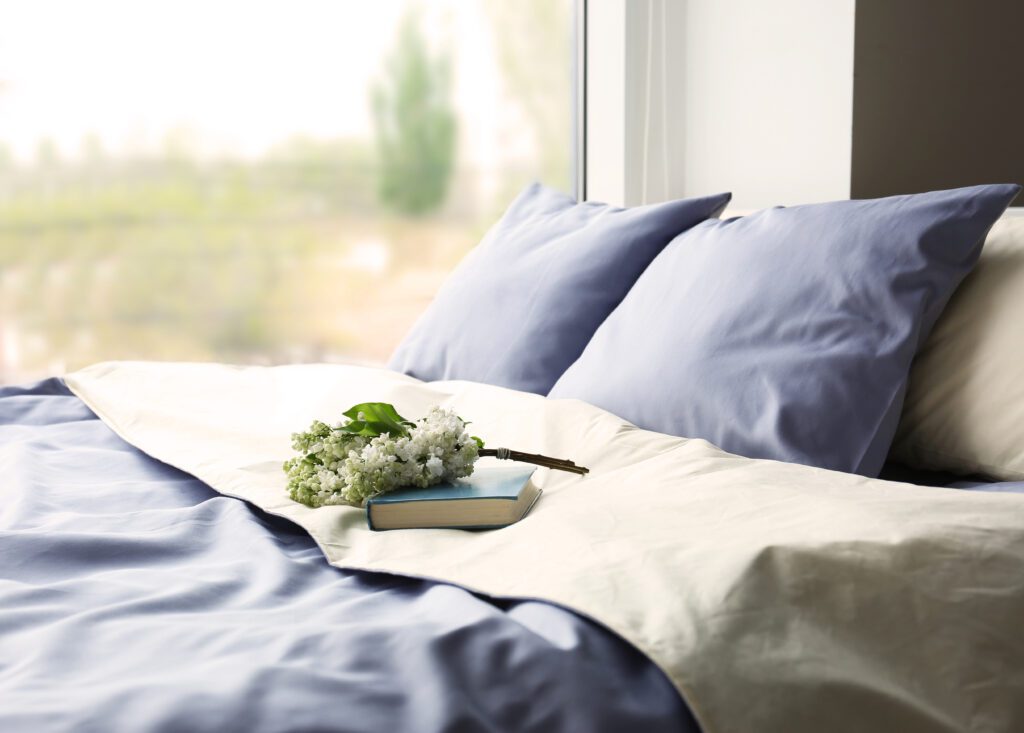As spring begins we have the opportunity to shift into healthy patterns that make for bright, happy days. Ironically, our best days actually begin in the evening with—you guessed it, the ever-elusive, always satisfying good night’s sleep. This is your guide to consistent, uninterrupted dreamy nights that lead to sunny, well-rested cheerful days.

What is Sleep Hygiene?
Developed by cognitive behavioral therapists to assist those with sleep disorders such as insomnia, sleep hygiene has been adopted to support anyone looking to improve their sleep. And according to sleep researchers, that may be quite a few of us. Statistics state that more than 70 million Americans work with chronic sleep problems. If you have difficulty falling asleep, staying asleep or you feel tired after a full night’s sleep, these techniques might be helpful to you.
Make Your Dream Sleep Space
When it comes to a bedroom built for good sleep, consider your senses. For sight, you’re going to want to cut the lights. Whether it’s blackout curtains or a good eye mask, find a way to establish complete darkness. The same goes for noise. Identify bothersome sounds and work to solve them. When it comes to scent, is there an essential oil like lavender that soothes you to slumber? Lastly, and perhaps the most fun, we have our sense of touch. Consider this article the sign you’ve been waiting for to spurge on good bedding. Your sheets, pillows and blankets should be a tactical dream come true.
Good Sleep Starts the Day Before
There are a few things you can do in your day to support your night’s sleep. Some things may be obvious, like keeping away from caffeine in the afternoon and evening. Experts suggest that regular exercises can make it easier to fall asleep and stay asleep. One less obvious tip suggests that resting in sunlight for 10 minutes a day is a key driver to establishing our circadian rhythms, which supports the quality of our sleep.

Get on a Schedule
Adults need seven to nine hours of sleep per day. Whether it’s a weekday or weekend, sleep hygiene means that you prioritize the hours your body needs and that you make that time consistent each day. This includes budgeting a full hour away from electronics before you begin to fall asleep. That’s right, no TV, no scrolling, nothing with a blue light and to allot a full 30 minutes for the act of falling asleep.
Lean Into Routine
Establishing a transition out of the doing mode and into the being mode is critical to a good night’s sleep. Close the day by acknowledging that you’ve done all you can and that you’ll pick it up again tomorrow. Then, step into your nighttime routine. Try a hot soak in the bath or dig into a bedside stack of books that don’t overstimulate, such as poetry, prayer or pictures. Don’t be afraid to lean into your child’s side, with coloring, puzzles and tactile games that make for great evening rituals.
Bed is for Sleeping
Experts suggest that we establish a mental connection between being in bed and actually being asleep. This includes tossing and turning. If after 20 minutes or so, you have not fallen asleep, get up and rest in low light before trying to fall asleep again. Even naps, which should be short, sweet and contained to the early afternoon, are best placed on a cozy couch or sunny reading chair.
This article, written by Georgia Pettit, first appeared in the Spring 2022 issue of Girl Camper magazine, Subscribe here.




